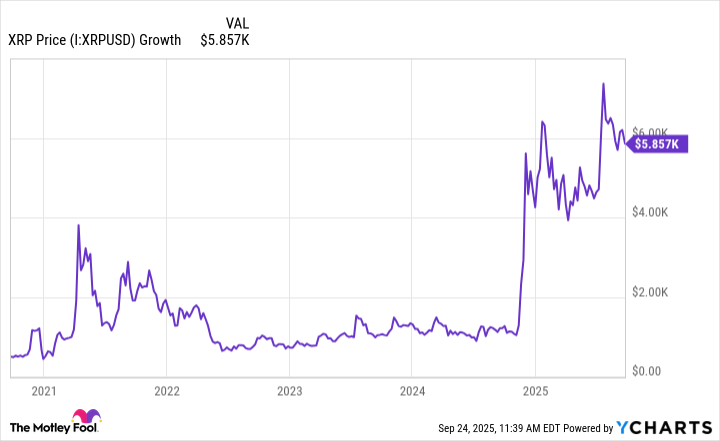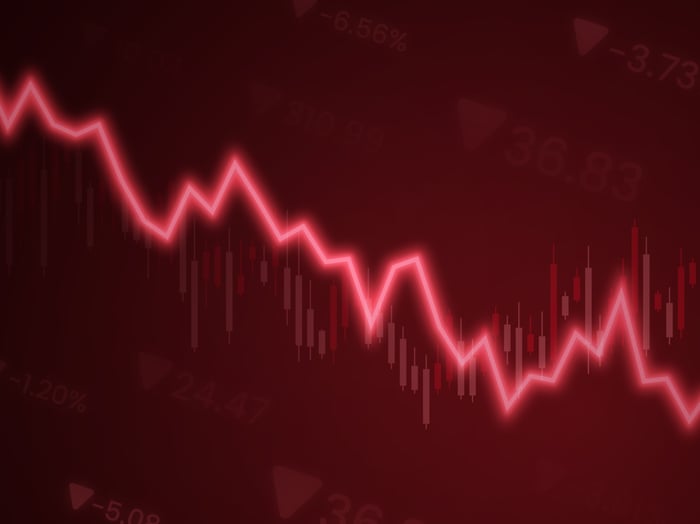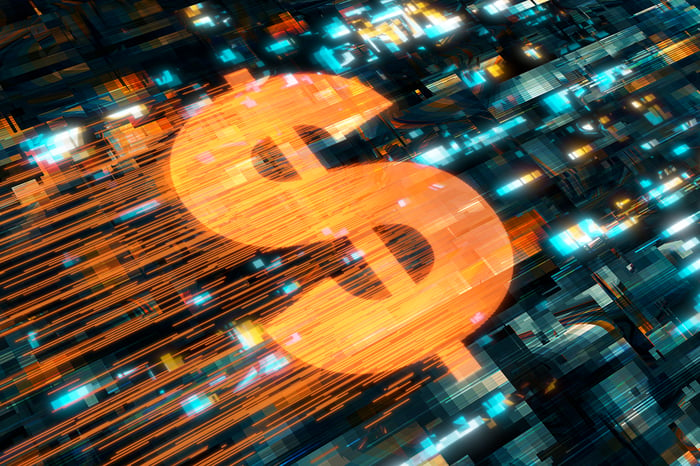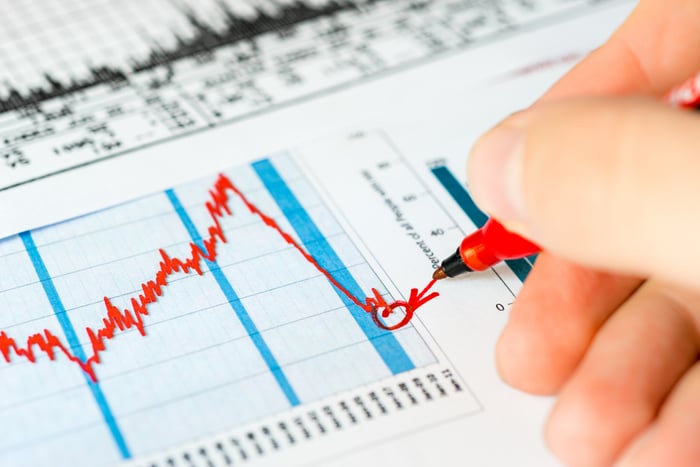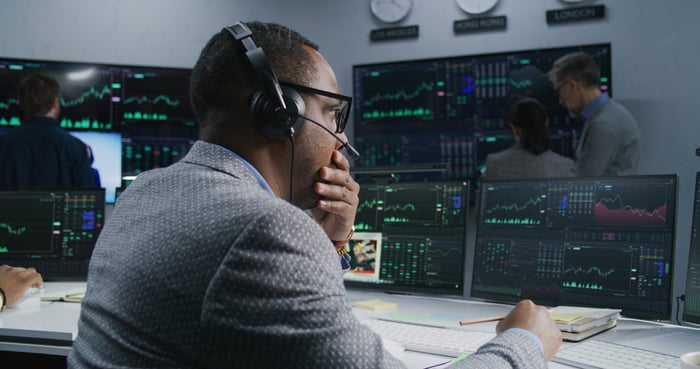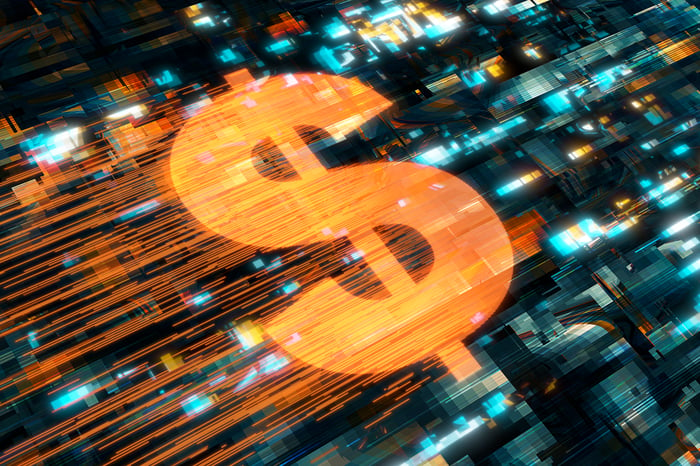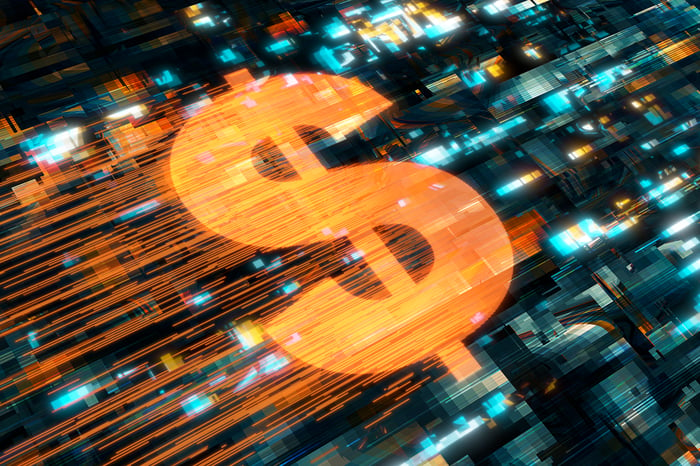Should You Buy XRP While It’s Under $4?
This coin has a very long runway for growth, and it’s making inroads.
Today, XRP (XRP -13.05%) is priced at about $3. Depending on your perspective, that number could sound high or low. So is it worth buying the coin before it hits $4, and does it actually have a realistic chance of doing that?
Let’s dive in and figure it out.

Image source: Getty Images.
Why the sub-$4 range is attractive
XRP’s recent price means that getting to $4 is not going to take a moonshot. Considering that the coin is up by 34% this year so far, it might even hit the target before the end of the year if its momentum picks up steam. But let’s zoom out to look at the trends that are likely to power further demand.
On that front, real-world asset (RWA) tokenization is the process of representing ownership of assets like stocks, commodities, and real estate in a crypto token managed on a blockchain so that they can be cheaply and quickly transferred or traced. Across public chains, tokenized RWAs are worth $33.5 billion and still climbing, so this is not just a fad anymore.
So where does the XRP Ledger (XRPL) fit? The XRP Ledger’s RWA footprint has been expanding quickly, with roughly $365 million in tokenized assets, up 12% during the 30-day period ended Oct. 8. Its roster of RWAs now includes notable asset platforms and issuers you would recognize from institutional investor circles.
In particular, U.S. Treasuries are the on-chain beachhead for financial institutions, and XRP is starting to have them in spades, with $170 million in value parked today, up by an impressive 26% during the past 30 days alone. And, critically, Ripple’s enterprise-targeted stablecoin, RLUSD (RLUSD -0.04%), launched on the XRPL with regulatory approval in December 2024, giving XRPL a native settlement rail that institutions can actually use alongside those Treasuries. RLUSD’s market cap is more than $791 million today, with its monthly transfer volume at roughly $5.3 billion and rising rapidly month over month.
Those assets make the XRPL a much better place to do business for the financial institutions that are looking to manage their capital and process their transactions on-chain. When paired with Ripple’s good relationships with international banks and currency exchange houses, it’s a strong cocktail of positive forces for further adoption of XRP as a financial tool.
In other words, big pipes for money are being laid right where and how the holders of large volumes of capital prefer to do business. If that process continues — and Ripple is deeply invested in making sure that it does — the sub-$4 window for XRP will feel like an obvious purchase in hindsight.
What could go wrong
XRP is thus worth buying while it’s less than $4. But that does not guarantee it will get there or that its price will subsequently go even higher if it does. A few things need to happen for the coin’s upward march to continue.
First, the XRPL’s systems and capabilities must continue growing, and Ripple’s marketing efforts must keep succeeding broadly. That means getting more RWA issuers opting in, larger portfolios of tokenized treasuries and funds, and deeper integrations that reduce operational drag for the regulatory compliance teams at big banks and asset managers.
Second, RLUSD adoption needs to broaden so that more institutional flows settle on XRPL rather than detouring to other rails where liquidity is deeper. Ripple has been explicit about building toward lending, identity verification, and other features to simplify the process of doing regulatory-compliant tokenization, but it needs to maintain its consistent execution for the chain to continue being successful.
Assuming those tailwinds persist, getting XRP from roughly $3 to $4 and beyond is very doable, particularly in a market cycle where broader crypto risk appetite remains positive.
Alex Carchidi has no position in any of the stocks mentioned. The Motley Fool has positions in and recommends XRP. The Motley Fool has a disclosure policy.




